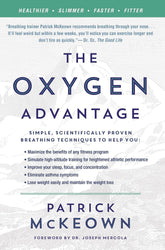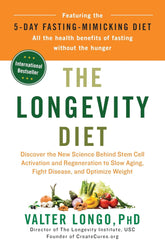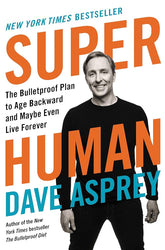5 Biohacks to Sharpen Your Brain (Without Getting Weird)
Want a quicker mind, steadier focus, and better recall—minus the sketchy pills and midnight cryochambers? Here are five high-leverage, low-friction biohacks that compound over time. Each comes with a simple protocol, safety notes, and how to track progress.
1) Treat Sleep Like a Performance Drug
Why it works: Sleep cements memories, clears metabolic waste, and restores neurotransmitter balance. One solid night can move the needle more than a week of “grind.”
Protocol
- Dose: 7.5–9 hours nightly, same bedtime/wake time ±30 min—even weekends.
- Light: Morning sunlight in your eyes (not through glass) for 5–10 minutes; go dim 90 minutes before bed; screens to Night Shift.
- Temp & noise: Room around 17–19°C; white noise if your environment is noisy.
- Cutoffs: Caffeine 8–10 hours before bed; alcohol & heavy meals 3–4 hours before.
- Naps: 20 minutes max, before 3 p.m.
Track it
- Subjective: “How hard was it to focus before lunch?” (1–10).
- Objective (if you have a wearable): total sleep time and consistency beats obsessing over “scores.”
Watch-outs
- If you snore loudly or feel unrefreshed, talk to a clinician about sleep apnea—massive brain-fog culprit.
2) Move in Ways Your Brain Loves
Why it works: Aerobic exercise boosts blood flow and neurotrophic factors; strength training improves insulin sensitivity and mood; coordination drills light up motor learning networks.
Protocol
- Aerobic base: 150–300 min/week brisk walking, cycling, or swimming (you should be able to speak in short sentences).
- Intervals (optional): 1–2 sessions/week of 6–10 hard efforts (60–90 seconds) with full recovery.
- Strength: 2–3 sessions/week, 5–8 compound lifts (push/pull/hinge/squat/carry), 2–4 sets each.
- Coordination: 10 minutes of skill—jump rope, dancing, ball drills, balance.
Track it
- Time-to-on-task: notice how quickly you “click in” after a workout.
- Resting heart rate trends; lower over weeks = better aerobic base.
Watch-outs
- Ramp volume gradually (10%/week). If you’re new or have conditions, clear intense work with your clinician.
3) Feed the Machine (Food & Smart Stims)
Why it works: Your brain is 2% of body weight but ~20% of resting energy use. Stable glucose, essential fats, micronutrients, and hydration keep signals smooth.
Protocol (food first)
- Plate model: ½ colorful veggies, ¼ protein (fish, eggs, legumes, lean meats), ¼ carbs (whole grains, potatoes, fruit), + a thumb of healthy fats.
- Focus foods:
- Omega-3s (EPA/DHA): fatty fish 2–3×/week (or algae/fish oil if advised).
- Choline: eggs, soy, liver—supports acetylcholine.
- Polyphenols: berries, cocoa, coffee/tea—neuroprotective.
- Leafy greens & nuts: magnesium, folate, vitamin E.
- Timing: For deep work, try a protein-forward breakfast; save heavier carbs for after mentally demanding blocks.
- Hydration: Start the day with water; aim for pale-straw urine.
Smart stimulants (optional, low-risk)
- Caffeine + L-theanine: ~1–2 cups coffee or 100–200 mg caffeine paired with 100–200 mg L-theanine can smooth jitters and improve attention.
- Creatine monohydrate: 3–5 g/day; helpful for vegetarians or heavy thinkers under sleep debt.
Track it
- Keep a minimalist food & focus log: what you ate, 90-minute post-meal energy (1–10), and whether you got sleepy. Adjust.
Watch-outs
- Supplements aren’t a substitute for diet/sleep. If pregnant, on meds, or with conditions, ask a clinician before supplementing.
4) Train Attention Like a Skill
Why it works: Focus is not a mood; it’s a trainable capacity. Repeated, high-quality bouts build the circuitry that resists distraction.
Protocol
- Context design: Phone outside reach, one-tab browser, notifications off.
- Pomodoro-plus: 50 minutes single-task focus + 10 minutes non-screen break (walk, stretch, breathe). 2–4 cycles/day.
- Mindfulness (10 minutes): Sit, eyes softly closed, follow the breath; when attention wanders, label “thinking” and return. That rep is the gain.
- NSDR/yoga nidra (10–20 minutes): Non-sleep deep rest to reset between blocks.
- Distraction fasting: Choose one 24-hour block per week with zero social feeds.
Track it
- Daily “attention quality” score (1–10) after your first deep-work block; watch the 14-day trend.
Watch-outs
- If persistent inattention/anxiety is severe or impairing, professional assessment beats more productivity hacks.
5) Learn Like a Scientist (Enriched Environments)
Why it works: The brain thrives on novelty and desirable difficulty. Spaced, mixed, and effortful learning encode deeper, longer-lasting memories.
Protocol
- Spaced repetition: Review new material 1 day, 3 days, 1 week, 1 month. Use digital flashcards (or calendar nudges).
- Interleaving: Mix related skills within a session (e.g., coding problems A/B/C rather than AAA, BBB, CCC).
- Teach-back: Explain a concept out loud or write a 200-word summary without notes.
- Skill stack: Add one “hard but fun” stimulus (instrument, language, drawing) 3×/week for 20–30 minutes.
- Environment: Work where you won’t be interrupted; add greenery, daylight, and a tidy desk to lower cognitive load.
Track it
- Retrieval rate: % of flashcards you can answer correctly after 24 hours.
- Weekly “new skill minutes.”
Watch-outs
- Feeling slow is normal; it’s the signal you’re at the right difficulty.
Quick-Start (7 Days)
- Daily: 10 minutes morning light, 50–10 focus cycle, protein-forward breakfast, 30–45 minutes movement, dim lights after sunset, 7.5–9 hours sleep.
- 3×/week: Strength training, spaced-repetition session, a 20-minute skill practice.
- 2×/week: Intervals, NSDR session.
- Once: Distraction fast (24 hours no feeds).
- Optional: Caffeine + L-theanine on heavy focus days; creatine daily.
The Bottom Line
You don’t need a lab to “biohack” your brain. You need a handful of repeatable behaviors, tracked lightly and tuned weekly. Do the unsexy stuff consistently, and your future self will feel like an upgrade—not a different person, just a better-rested, better-fed, better-focused you.
If you’d like, I can tailor this into a version for students, developers, or founders—just say the word.

















